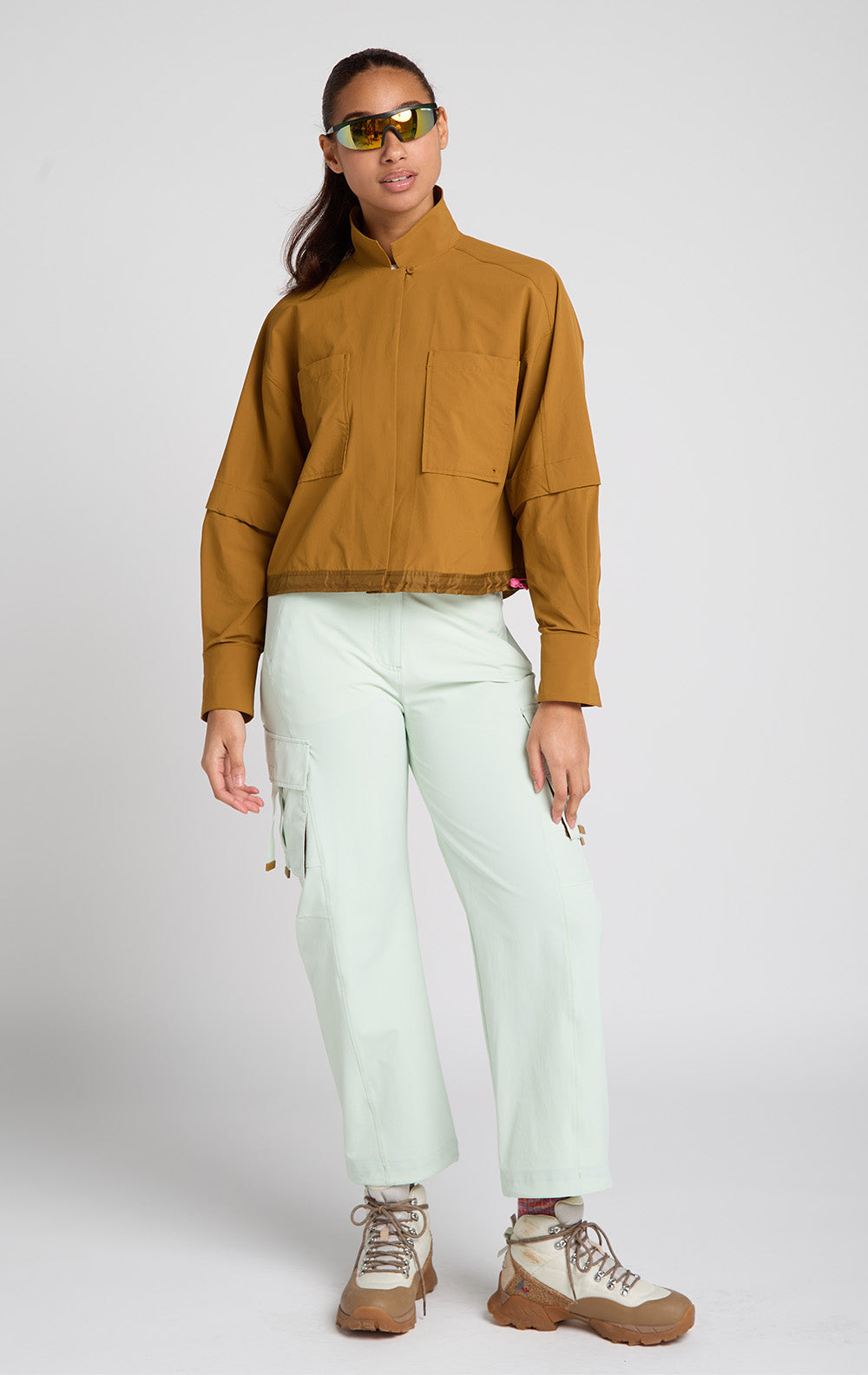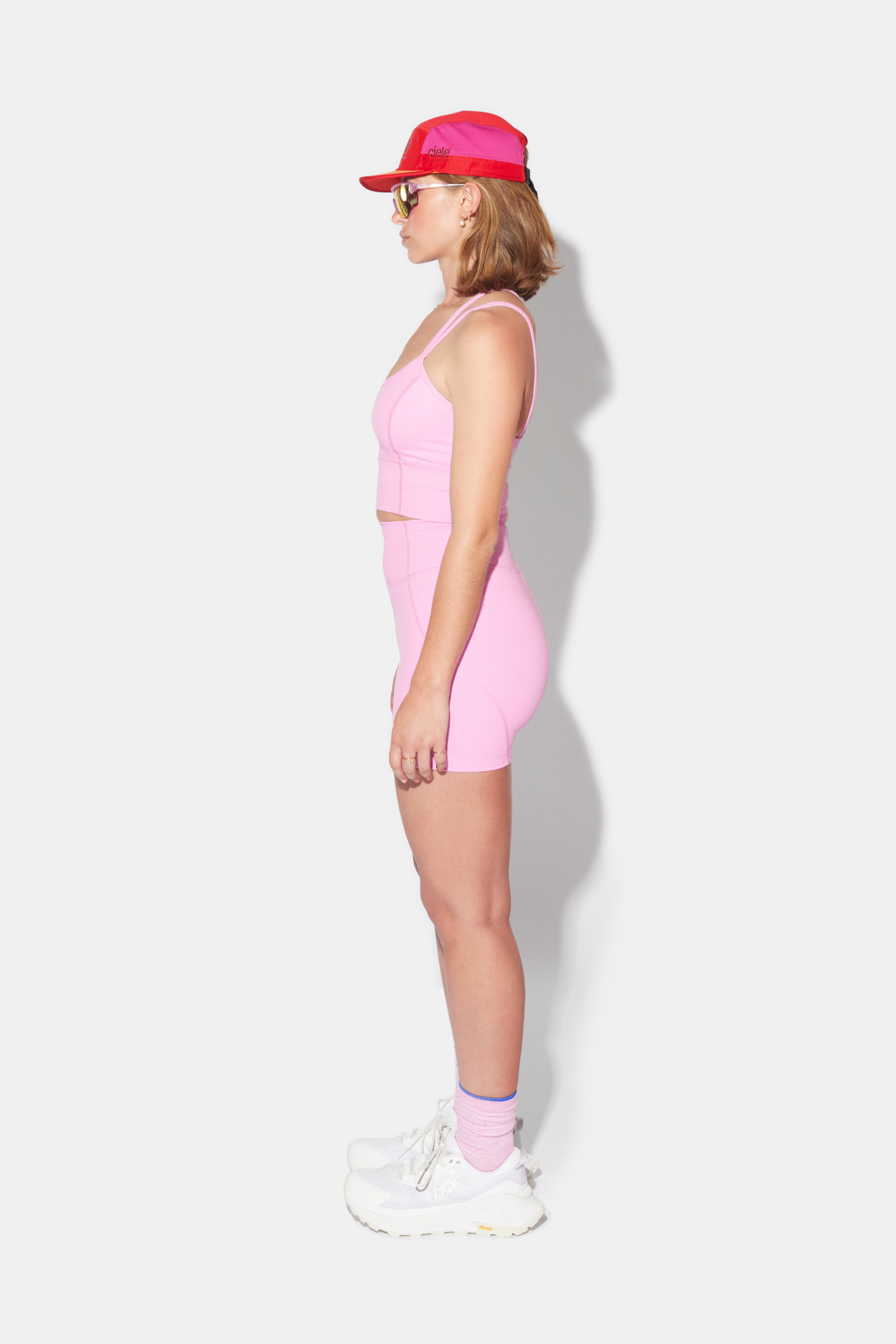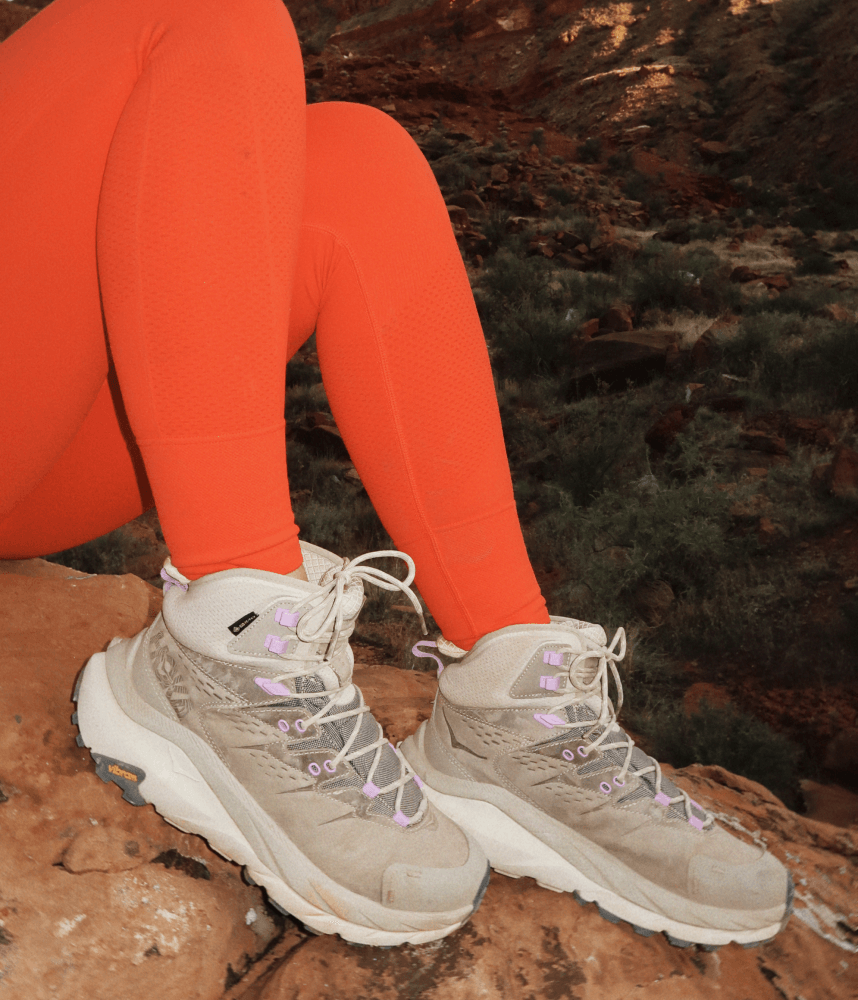Let’s get to know the basics.
Everything You Need to Know About Car Camping:
Before You Go

Research the destination and have a game plan for claiming your campsite.
Securing a campsite can be somewhat of a dance, especially during peak season when everyone and their mother is looking to snag a spot. To give yourself the best chance at striking gold, do your research ahead of time and have a plan of action for which campsites you'd like to stay at. Some campsites require a reservation and some are first come first serve, so it's best to know the lay of the land ahead of your departure.
If you’re unfamiliar with the area, camping apps, like the Dyrt, are tremendously helpful to understand which campsites are available (and what’s required to stay there). In the app, you can filter results by *tent camping* and then choose from dispersed or established campsites. Established campsites have amenities such as restrooms, picnic tables, and often require a nightly fee to stay (payable with cash only). Dispersed camping, on the other hand, is free, but doesn’t offer any of the same amenities or maintenance.
We recommend bookmarking a few campsites to scope out, in case your first pick is already full when you arrive. *Most* campers depart from the campground before noon, often in the early morning, so it’s best to arrive early to secure a spot.
Lastly, while you’re doing your research, check the fire bans in the area to ensure campfires are permitted. This will help you plan your meals (and late night s’mores) accordingly.
Invest in quality gear.
Being prepared for all your adventures—big and small—starts with having the right gear and apparel. The thought of spending more than 24 hours outside might sound intimidating, but we promise, with quality gear and the right clothes, you’ll be camping (and sleeping) like a pro. Shop gear essentials from our favorite outdoor brands below—perfect for your first or 400th adventure.

Use a packing checklist and bring more than you think you need.
The one major downside to sleeping outside is the amount of clothing, kitchen tools, and sleep gear you have to pack. With so much to remember, it’s easy to forget a few things at home. Some of the most commonly forgotten items while camping are a pillow, speaker, headlamp, and portable charging banks. To prevent anything getting left behind, use our printable packing checklist, complete with everything you need (and nothing you don’t) to successfully live in the wilderness, at least for a couple of nights.
As with everything else when camping, it’s best to bring more than you think you need. Everything gets dirty and it happens much quicker than you might anticipate, so having extra pairs of socks, underwear, and comfortable clothes never hurts. Pro tip: Use drybags or ziplock bags to make sure your clothes don’t get wet.
Meal plan and meal prep.
Even with all the right camping kitchen gear, whipping up a meal in the wilderness can be an undertaking, especially if that meal has to feed more than one mouth. Eliminate some of this stress by deciding on a meal plan ahead of time and prepping as much food as possible. If you’re going to make scrambled eggs, scramble the eggs in a mason jar. If you’re going to make tacos, chop your veggies and prepare your guacamole. You get the gist. Prep as much as you can ahead of time and throw it in the cooler.
If you’re going with a group, divvy up the meal plan responsibilities; that way all the preparation doesn’t fall on one person.

Use a small and large cooler
With all the meal prepping mentioned above, it’s best to bring one small and one large cooler to stay organized on your trip. The large cooler can house all your preparations and bulk items, while your small cooler can be used for the drive and any day trips you plan to take while there. This way, you won’t have to lug the big, heavy cooler with all your food on your day excursions. For small, easy-to-carry coolers, we love the backpack cooler from the Get Out.
Bring multiple gallons of water.
Chances are, there will not be a source of clean, running water at (or even near) the campsite, so you’ll need to bring enough for drinking, cooking, doing dishes and putting out any fires. Again, bring more than you think you need. Most people recommend bringing two gallons of water per person, per night, but it doesn’t hurt to have a few extra stashed in the car just in case.

Download maps, playlists, and any other offline mobile resources.
The beauty of camping is that it pushes us to spend time offline; however, we know there are certain apps you just can’t live without. Before losing service, be sure to download any maps, playlists or mobile resources that typically require an internet connection.
Leave valuables at home.
While you can technically lock anything valuable in the car, it’s best to keep the majority of your valuables at home to prevent any mishaps. There’s already so much gear, clothing, etc. to keep track of, you’ll be thanking yourself for having one less thing to worry about.
Check the forecast.
Since the weather can change on a dime, we recommend checking the forecast a week before the trip, a few days before the trip, and the day of the trip to stay prepared. This is *probably* obvious to most, but we’ll still mention it—you should check the daytime and nighttime temperatures since you’ll be sleeping outside. Le duh, right? If temperatures are dipping below 40 degrees, you’ll need extra layers, and a sleeping bag rated for cold weather.
During Your Camping Trip
Use the buddy system
There is strength in numbers, and this is all the more true when it comes to camping. While solo camping trips can be peaceful and rewarding, beginners should stick to the buddy system, at least for the first few camping trips. If you can go with more experienced outdoorswomen and learn from them, all the better. Get your best gals together and get outside.

Divvy up responsibilities
As you can probably imagine by now, camping requires more work than a typical vacation. Thus, we recommend you divvy up the cleaning and cooking responsibilities among all the people in your group. No one wants to be the maid or the chef all of the time. Share the load and have more fun.
Stay organized
Oof. We know better than anyone that it’s all too easy to lose track of belongings—at home and in the great outdoors. Once you get to the campsite, develop an organization system to help keep everything in place and write down where everything is in your notes app. This will keep you from having to rummage through every bag when you can’t find your toothbrush.

Respect the campers and wildlife around you
Just like when staying in a hotel, campgrounds have quiet hours too, with most following between the hours of 10:00 p.m. and 7:00 a.m. Be respectful of your fellow campers and critters by observing the site’s quiet hours. Outside quiet hours you should still be conscious of your group’s noise level. No one wants to camp next to a group that’s blaring music or talking unnecessarily loud.
Leave No Trace
*Leave No Trace* is a seven-principle guide on how to enjoy the outdoors while still protecting the local environment. The seven principles are: plan ahead and prepare, travel and camp on durable surfaces, dispose of waste properly, leave what you find, minimize campfire impacts (be careful with fire), respect wildlife, be considerate of other visitors.
We’ve touched on most of these principles with the exception of, *dispose of waste properly.* You should always leave the campsite in its natural condition: Clean up after yourself, don’t leave food scraps or any other trash at the campsite, and take all garbage to a dumpster.

Apply (and reapply) sunscreen
We’ve said it once and we’ll say it again— more time outside means more time in the sun, which inevitably means more sunscreen. We’re willing to die on this hill for you because skin damage ain’t no joke. Shop our favorite recreation-ready ‘screens below to stay protected.
Drink plenty of water
In the same vein, time under the sun also means drinking more than enough water to stay hydrated, especially if you’re camping at elevation. This is why it’s so important to bring multiple gallons of water; you can stay on top of your fluid intake and ahead of dehydration.













































































































































Leave a comment
This site is protected by hCaptcha and the hCaptcha Privacy Policy and Terms of Service apply.